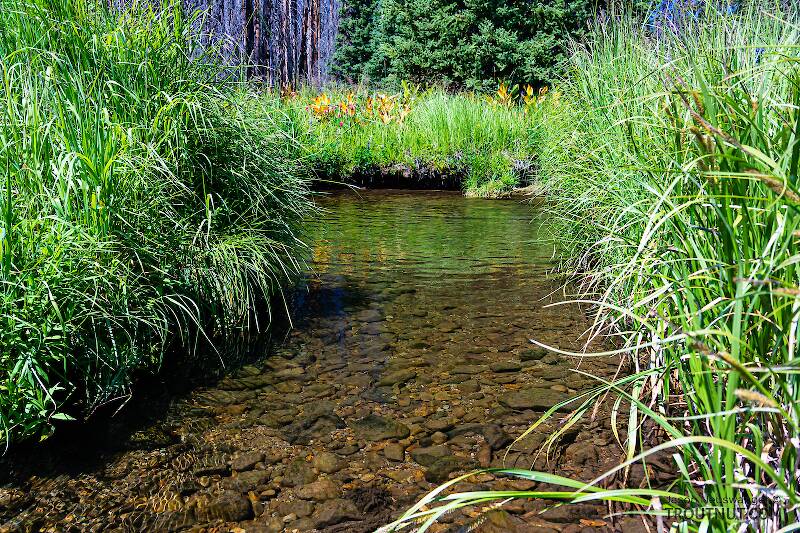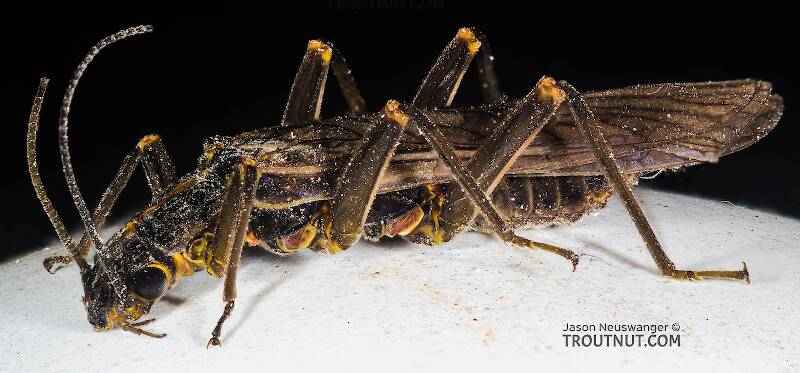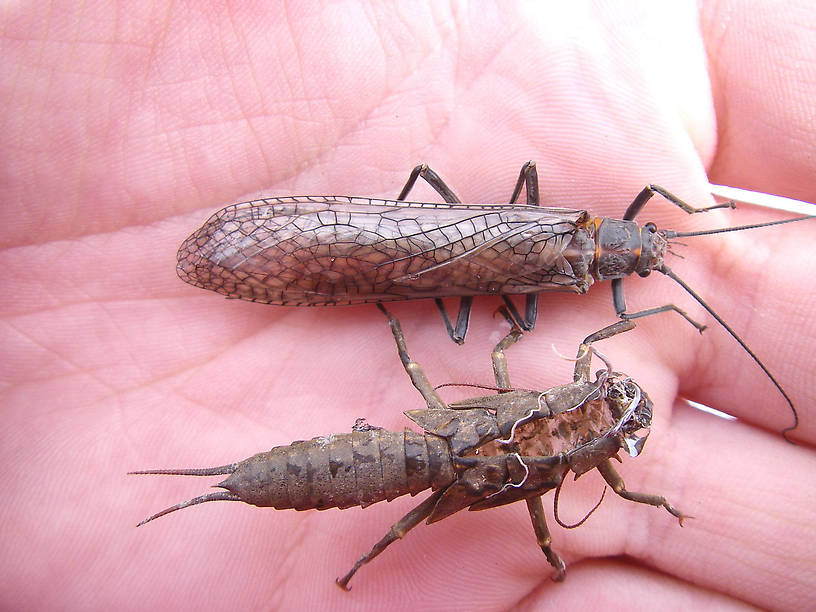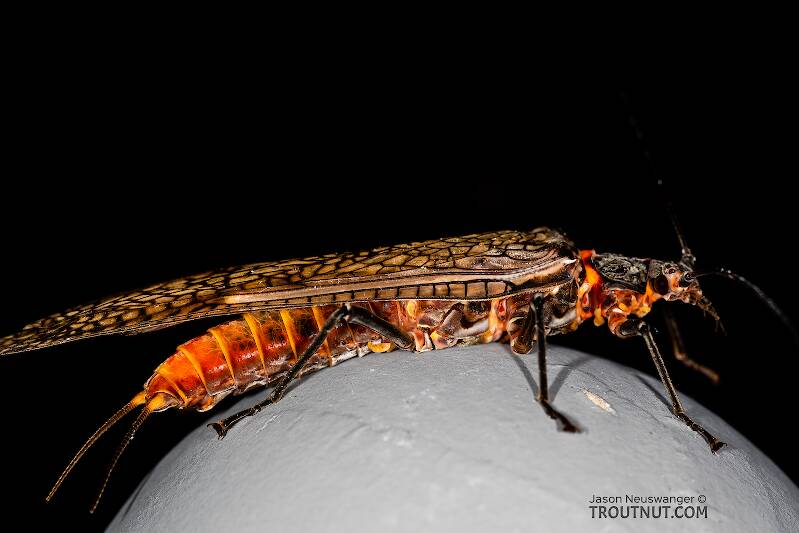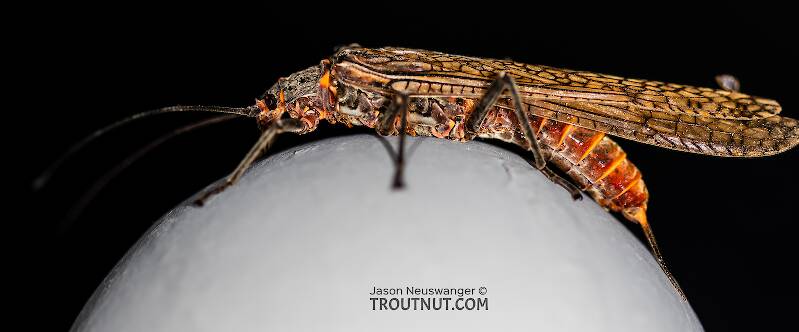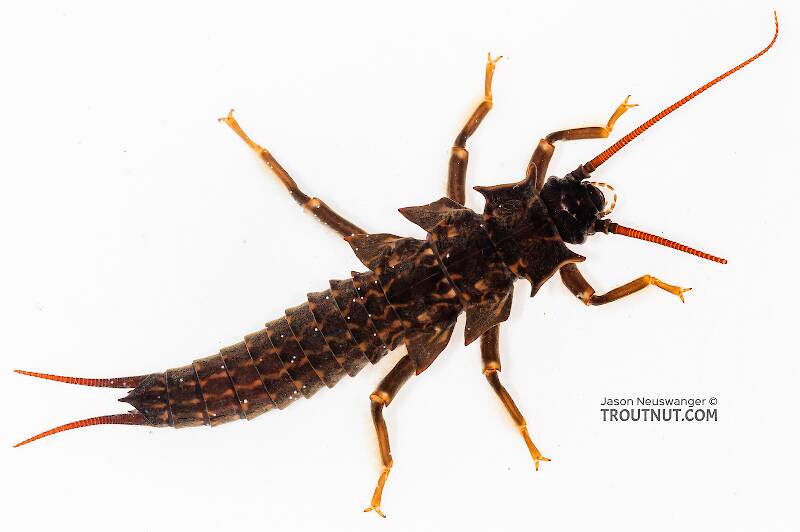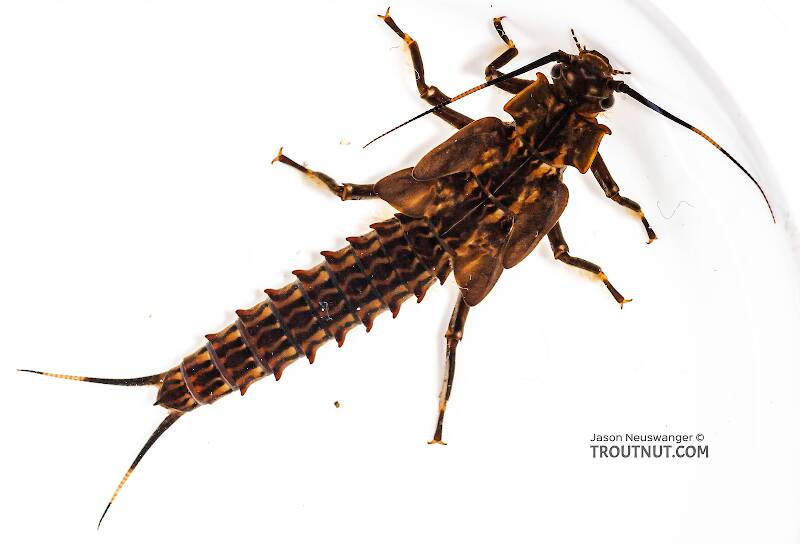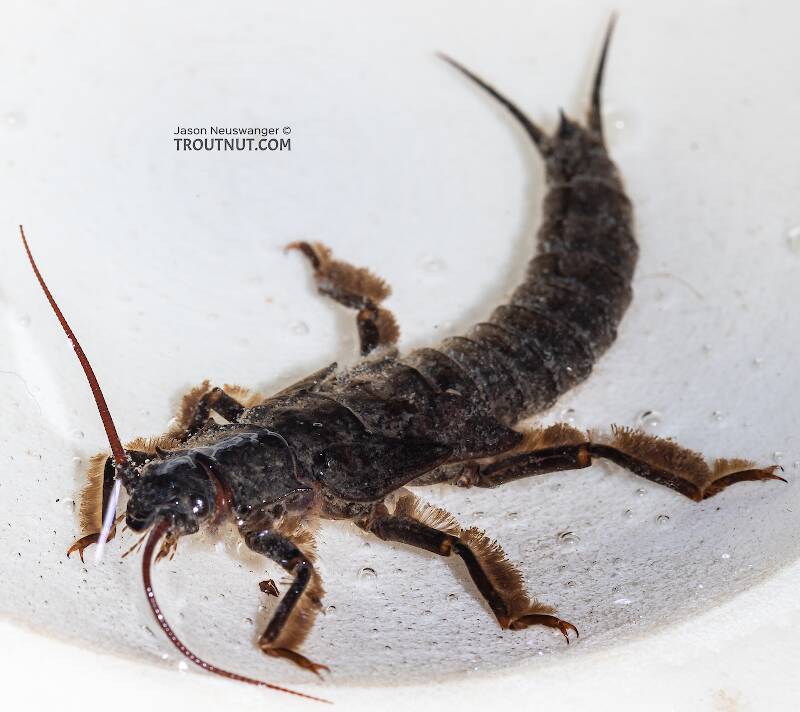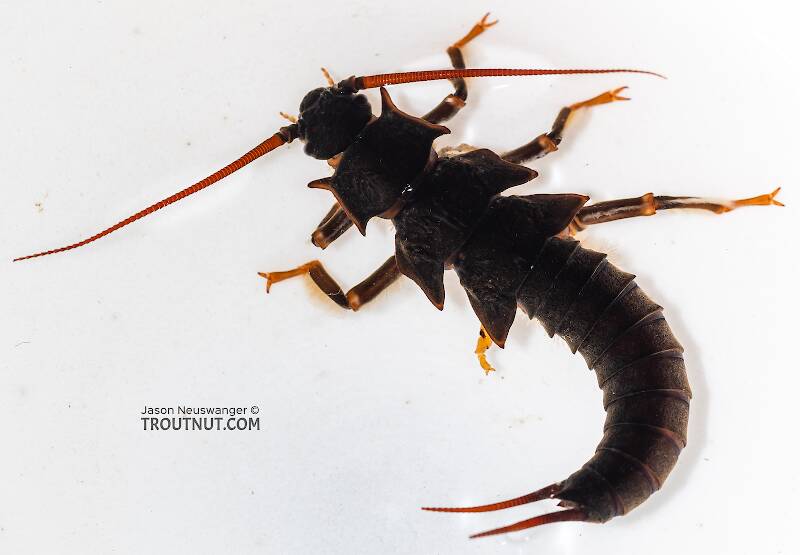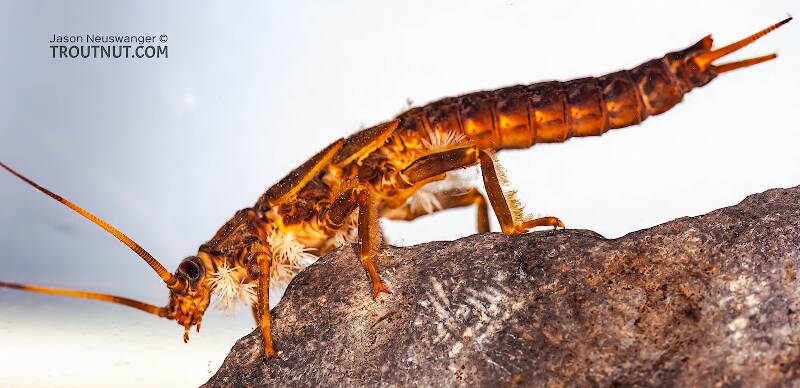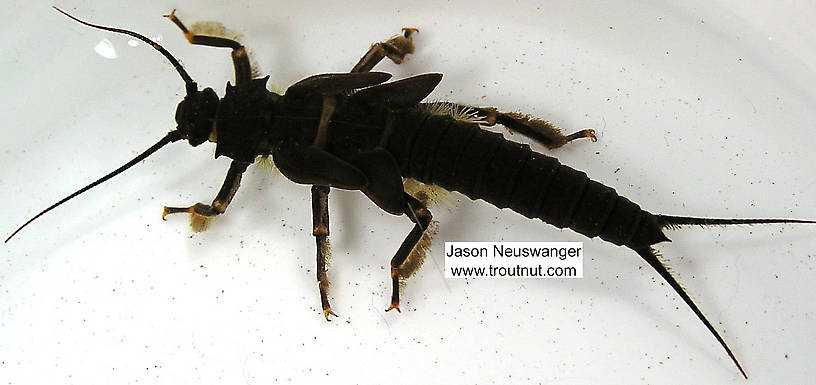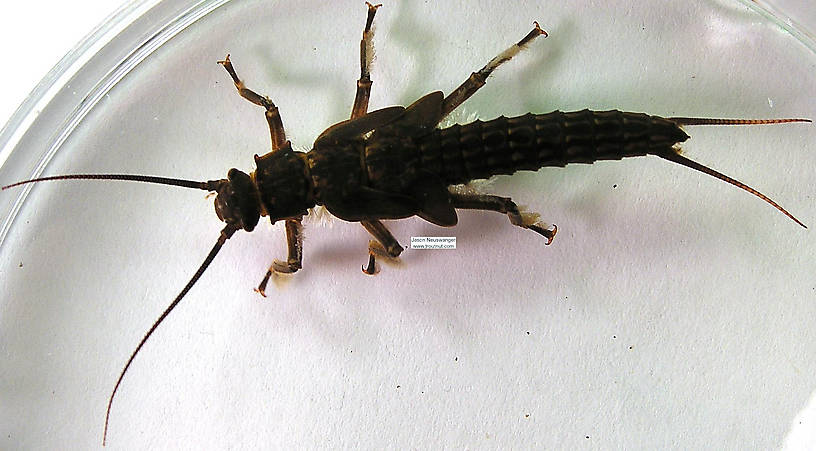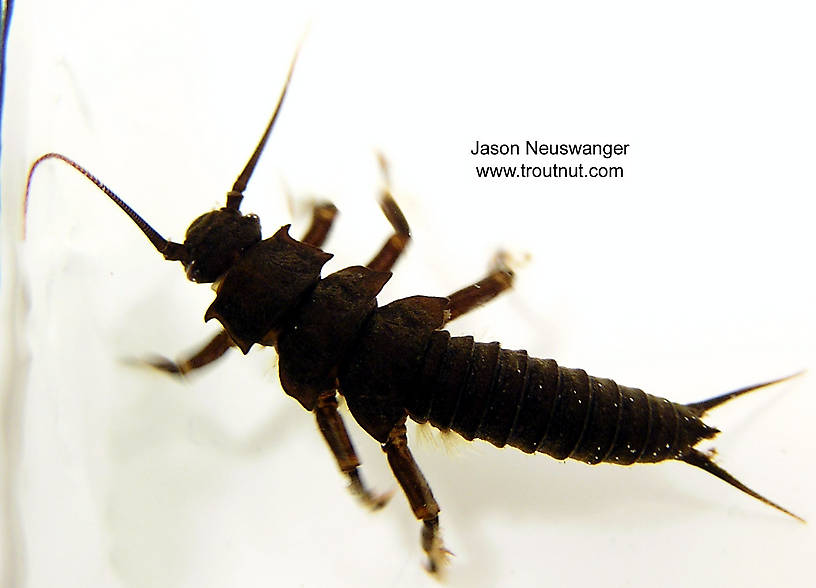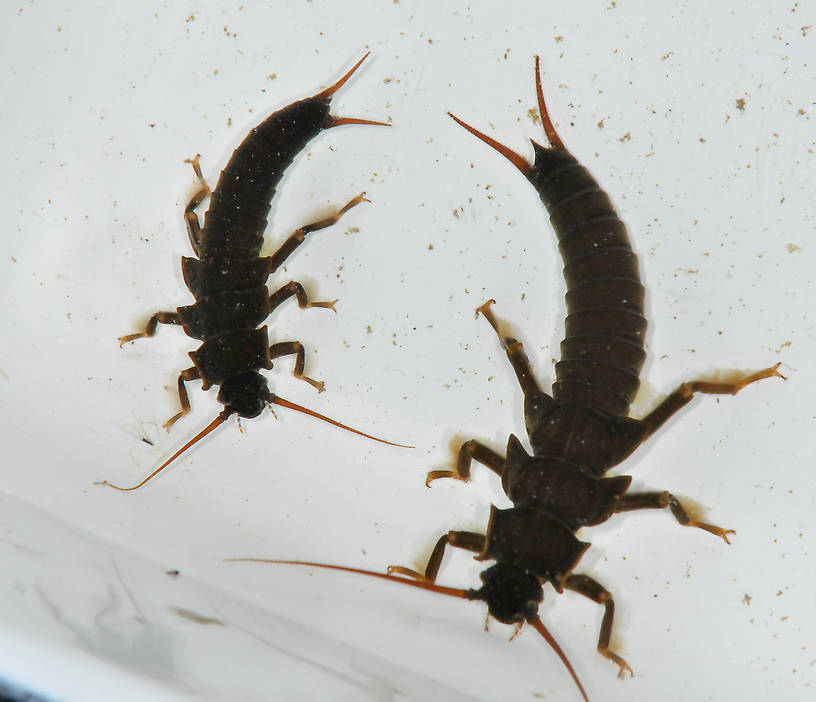
Hex Mayflies
Hexagenia limbata
The famous nocturnal Hex hatch of the Midwest (and a few other lucky locations) stirs to the surface mythically large brown trout that only touch streamers for the rest of the year.
Featured on the forum

Troutnut is a project started in 2003 by salmonid ecologist Jason "Troutnut" Neuswanger to help anglers and
fly tyers unabashedly embrace the entomological side of the sport. Learn more about Troutnut or
support the project for an enhanced experience here.
Stonefly Genus Pteronarcys (Salmonflies)
This genus contains the largest stoneflies, and probably the most important thanks to the species Pteronarcys californica. It is commonly called the Salmonfly, and is responsible for the famous hatches of giant stoneflies across the West in the summer. Pteronarcys princeps complements it in higher altitudes across its range.
Pteronarcys dorsata or Giant Black Stone as it is often called is an eastern species which occasionally provides angling action, but it is nocturnal and its populations cannot compare with californica.
In most angling literature, species of this genus were referred to as Salmonflies in the West and Giant Black Stoneflies/Stone Creepers in the East. Over time these regional names are going by the wayside as more and more anglers refer to all of them collectively as Salmonflies.
Read about each species for details.
Pteronarcys dorsata or Giant Black Stone as it is often called is an eastern species which occasionally provides angling action, but it is nocturnal and its populations cannot compare with californica.
In most angling literature, species of this genus were referred to as Salmonflies in the West and Giant Black Stoneflies/Stone Creepers in the East. Over time these regional names are going by the wayside as more and more anglers refer to all of them collectively as Salmonflies.
Read about each species for details.
Genus Range
Specimens of the Stonefly Genus Pteronarcys
2 Male Adults
3 Female Adults
9 Nymphs
1 Streamside Picture of Pteronarcys Stoneflies:
Discussions of Pteronarcys
High Water
8 replies
Posted by Dbar on Apr 13, 2007 in the species Pteronarcys californica
Last reply on Jun 11, 2017 by Ricofreako
The hatch often occurs during high water (just after peak) so you sometimes have limited visibility during the hatch. Also - I believe that they can occur above 7000 feet.
Love ths site.
Love ths site.
Salmonfly question for you westerners
7 replies
Posted by Troutnut on Jul 30, 2006 in the species Pteronarcys californica
Last reply on Jun 4, 2016 by Chipper
I don't have many reliable sources about this species, so it'd be great if you western fishermen could read over the article and make sure I haven't said anything stupid or omitted anything important. I'll be happy to incorporate any additions you have.
Question
7 replies
Posted by Max29 on Jan 29, 2008 in the species Pteronarcys dorsata
Last reply on Jan 29, 2008 by Taxon
Are stoneflies and salmonflies the same thing or are they just related because here in the mid west we have the stonfly hatch and if they are related the stonfly could be called the salmonfly and the salmonfly hatch is only in the west because I have trouble because I want to become a better insect identifier when it comes to fishing because i went to other sites that so a stonefly is a stonefly and a salmonfly is a salmon fly but yet you say stonefly nymph but in parenteseses you have american salmonfly so is there really no such thing as a salmonfly but it is rather called a stonefly.
Start a Discussion of Pteronarcys
References
- Schwiebert, Ernest G. 1955. Matching the Hatch. MacMillan Publishing Company.
- Swisher, Doug and Carl Richards. 2000. Selective Trout. The Lyons Press.
Stonefly Genus Pteronarcys (Salmonflies)
Taxonomy
Species in Pteronarcys
Pteronarcys bilobaKnobbed Salmonflies
1
17
Pteronarcys californicaGiant Salmonfly
9
84
Pteronarcys dorsataAmerican Salmonflies
3
19
Pteronarcys princepsEbony Salmonfly
0
0
Pteronarcys proteusAppalachian Salmonflies
1
10
Species in Pteronarcys: Pteronarcys biloba, Pteronarcys californica, Pteronarcys dorsata, Pteronarcys princeps, Pteronarcys proteus
3 species (Pteronarcys comstocki, Pteronarcys pictetii, and Pteronarcys scotti) aren't included.

